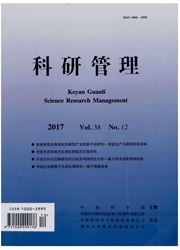

 中文摘要:
中文摘要:
企业创新融资约束是当前投资理论研究的重要组成部分,然而当前对这一问题的研究主要集中在R&D投资与内部资金约束角度,忽略了负债融资约束。基于R&D异质性角度,本文把R&D投资区分为探索式创新投资和常规式创新投资,运用《企业会计准则》(2006)之后中国A股上市公司R&D投资数据和q投资模型,研究发现:探索式创新投资显著地受到负债融资约束,而常规式创新投资对负债融资却不敏感。不同来源的负债对企业的创新投资约束也有差异:银行借款与两种创新投资显著负相关;商业信用和探索式创新投资不存在显著相关关系,而常规式创新投资却可能利用商业信用来进行研发活动。本文的研究为企业创新融资战略和政府的科技补贴政策提供了决策参考。
 英文摘要:
英文摘要:
Financing constraint of innovation is an important topic in investment theory research. Currently, the hottest debate is a- round the relationship between R&D investment and internal funds, while the external funds constraint has been neglected. Base on heterogeneity, we divide the innovation investments into exploratory innovation and routine innovation using pooled cross - section data and q model, we find that exploratory innovation investment is curtailed by debt financing while routine innovation investment is not. The different sources of debts have different impact on innovation investments : innovation investments are curtailed by bank loan; routine innovation investments are positively related to commercial credits while exploratory innovation investment is not. This paper has important policy implications with respect to firms' R&D strategies and government' s R&D subsidies.
 同期刊论文项目
同期刊论文项目
 同项目期刊论文
同项目期刊论文
 期刊信息
期刊信息
